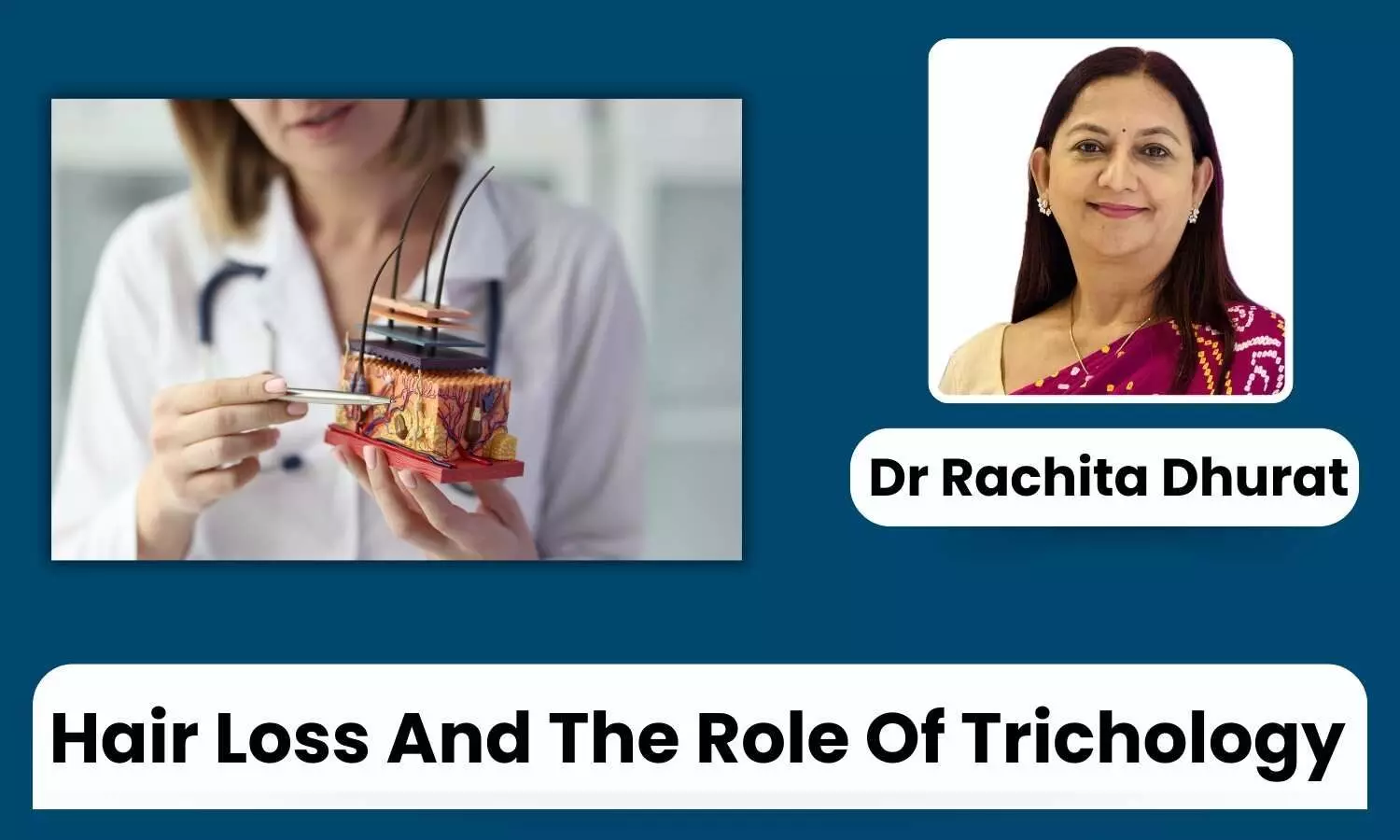Hair Loss: Causes, Treatments, and the Importance of Trichology - Dr Rachita Dhurat

Hair loss is a prevalent issue that affects millions globally, and it gained significant attention during the COVID-19 pandemic. Understanding the intricacies of hair loss is essential, particularly through the lens of trichology, which offers valuable insights into its causes and treatments.
Hair Growth Cycle
In a healthy scalp, approximately 90% of hair is in the anagen (growth) phase, while about 10% is in the telogen (resting) phase. This balance is crucial for maintaining consistent hair growth and minimising shedding.
However, when the ratio is disrupted—where more hair follicles transition to the telogen phase than remain in the anagen phase—noticeable hair loss can occur. Various factors contribute to this imbalance, including genetics, epigenetic stress, autoimmune conditions, hormonal fluctuations, nutritional deficiencies, and other medical issues.
The normal hair growth cycle consists of three main phases:
- Anagen (Growth Phase): Lasting 2–7 years, this phase is characterised by active hair growth, with about 85-90% of hair in this stage at any given time.
- Catagen (Transition Phase): This brief phase lasts 2–3 weeks, during which hair stops growing and detaches from its blood supply, with only 1-2% of hair in this phase.
- Telogen (Resting Phase): Lasting 2–4 months, hair rests in this phase before falling out, allowing new growth to emerge. Around 10-15% of hair is typically in this phase.
After the telogen phase, the cycle begins anew with the growth of new hair.
Role of Trichology
Trichology is the scientific study of hair and scalp health. It plays a vital role in diagnosing and treating hair loss through a holistic approach that considers genetics, hormonal imbalances, nutritional deficiencies, and environmental factors.
Diagnosis typically involves a combination of medical interviews, physical examinations, and laboratory tests, alongside specialised techniques like trichoscopy and hair pull tests. By examining the scalp and hair follicles, trichologists can pinpoint the root causes of hair loss and devise personalised treatment plans.
Common Causes of Hair Loss
Several conditions can lead to hair loss, including:
- Androgenetic Alopecia: Also known as male or female pattern baldness, this genetically determined condition results in the miniaturisation of hair follicles and is the most common cause of hair loss.
- Telogen Effluvium: This condition occurs when a significant number of hair follicles enter the telogen phase simultaneously, leading to excessive shedding. It can be triggered by stress, illness, thyroid disorders, or certain medications.
- Alopecia Areata: An autoimmune disorder where the immune system attacks hair follicles, causing patchy hair loss. Its exact cause is unknown, but genetic and environmental factors are believed to play a role.
Treatment Options for Hair Loss
The most effective treatment for hair loss depends on its underlying cause. For instance, the treatment for alopecia areata differs from that for androgenetic alopecia. Common treatment options include:
- Topical and Oral Treatments: These treatments can play a significant role in managing hair loss by not only slowing down the process but also stimulating the regrowth of hair, offering a comprehensive approach to maintaining healthy hair.
- PRP or IPRF Therapy: Platelet-rich plasma injections stimulate hair follicles and encourage growth.
- Microneedling: Enhances the absorption of topical treatments and promotes collagen production in the scalp.
- Mesotherapy: Involves injecting nutrients directly into the scalp to promote hair growth.
- Lifestyle and Nutritional Advice: Addressing dietary factors, stress management, and proper hair care to support healthy hair growth.
By understanding hair loss through the lens of trichology, individuals can gain valuable insights into effective treatments and prevention strategies. This knowledge empowers them to take control of their hair health, fostering a sense of confidence and well-being


